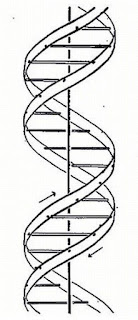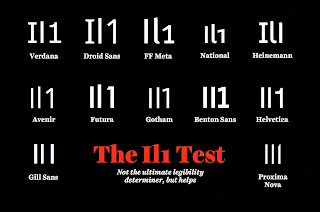Latest modern science | Link roundup for March 2016 - Si Bejo Science
link roundup posters versus talks type crimesI have to lead with Jeremy Fox on the Dynamic Ecology blog, which tells you a big mistake almost every poster makes:
The post actually said too much text, but you get the point. (And thanks for the plug for the blog, Jeremy! Hat tip to Meghan Duffy and Pat Schloss.)
Steven Heard delves into a topic we�ve discussed on the blog before: should you give a poster or a talk?
Steven has conferences on the brain this month, as he also wrote about how he tackles conferences as a introvert:
Ellen Lupton has a free class on poster design up at Skillshare. You need to register, but that�s all. I did so and enjoyed it a lot. If you take the class, you�re asked to design a movie poster. The student gallery is quite fun. Hat tip to, um, Ellen Lupton.
The trick of posters is to take often complex things and present them in a simple way. Brains have a reputation for being complex, so how can they be represented simply? A nice article in Nature Methods applies design to neural circuits. The figure below shows a principle (show different connections use different arrows or different colours, but not both), and a before and after critique:
Hat tip to Adam Calhoun.
David Robinson offers alternatives to pie charts.
It�s a lengthy post that is probably helpful if you are fluent in the R statistics package. (I am not, so can�t judge.) Hat tip to Michael Hoffman.
As a biologist, I�ve seen this picture of DNA many times:
What I hadn�t realized until Kindra Crick tweeted it was that this iconic scientific image was drawn by the late Odile Crick, who mostly painted nudes. It was uncredited in the original Watson and Crick paper. Like Jane Richardson (who I mentioned last month), her contribution deserves to be better known. Again, it�s a reminder that good visualizations take some skill that not everyone has, and the impact a good visual can have is enormous.
Here�s how Twitter creates its visual style. Can you articulate a style for your poster as clearly?
Today�s lesson in the importance of typography.
Hat tip to Mark Fidelman and Nancy Duarte.
And now for something completely different: a television series recommendation. While you�ve been watching Netflix original series like Daredevil or House of Cards, this one might have escaped your attention because it�s a foreign language series (Japanese).
Atelier is just a lovely series about beauty, design, craft, professionalism, and mentoring: themes that often appear on this blog. It�s subtle, often funny, and so well observed.
Oh yes, and there�s a lot of lingerie. So it�s a little more visually interesting than academia. Recommended.
(I know, lingerie shows up on this blog more often than one might expect. But it�s not always my fault!)
�Too much stuff� image from here.
The post actually said too much text, but you get the point. (And thanks for the plug for the blog, Jeremy! Hat tip to Meghan Duffy and Pat Schloss.)
Steven Heard delves into a topic we�ve discussed on the blog before: should you give a poster or a talk?
I think the poster option is underappreciated. Because talks are seen as the default, and because they�re easier to prepare, it�s easy to slip into preferring talks without thinking carefully about the advantages and disadvantages of each format. There are major advantages to posters � especially the very high quality of one-on-one interactions they can bring � and casually defaulting to �talk� blocks off opportunities.
Steven has conferences on the brain this month, as he also wrote about how he tackles conferences as a introvert:
I like all kinds of people � one or two at a time. No matter how much I enjoy seeing my colleagues and friends, I find large quantities of them exhausting.
Ellen Lupton has a free class on poster design up at Skillshare. You need to register, but that�s all. I did so and enjoyed it a lot. If you take the class, you�re asked to design a movie poster. The student gallery is quite fun. Hat tip to, um, Ellen Lupton.
The trick of posters is to take often complex things and present them in a simple way. Brains have a reputation for being complex, so how can they be represented simply? A nice article in Nature Methods applies design to neural circuits. The figure below shows a principle (show different connections use different arrows or different colours, but not both), and a before and after critique:
Hat tip to Adam Calhoun.
David Robinson offers alternatives to pie charts.
It�s a lengthy post that is probably helpful if you are fluent in the R statistics package. (I am not, so can�t judge.) Hat tip to Michael Hoffman.
As a biologist, I�ve seen this picture of DNA many times:
What I hadn�t realized until Kindra Crick tweeted it was that this iconic scientific image was drawn by the late Odile Crick, who mostly painted nudes. It was uncredited in the original Watson and Crick paper. Like Jane Richardson (who I mentioned last month), her contribution deserves to be better known. Again, it�s a reminder that good visualizations take some skill that not everyone has, and the impact a good visual can have is enormous.
Here�s how Twitter creates its visual style. Can you articulate a style for your poster as clearly?
Today�s lesson in the importance of typography.
Hat tip to Mark Fidelman and Nancy Duarte.
And now for something completely different: a television series recommendation. While you�ve been watching Netflix original series like Daredevil or House of Cards, this one might have escaped your attention because it�s a foreign language series (Japanese).
Atelier is just a lovely series about beauty, design, craft, professionalism, and mentoring: themes that often appear on this blog. It�s subtle, often funny, and so well observed.
Oh yes, and there�s a lot of lingerie. So it�s a little more visually interesting than academia. Recommended.
(I know, lingerie shows up on this blog more often than one might expect. But it�s not always my fault!)
�Too much stuff� image from here.







































